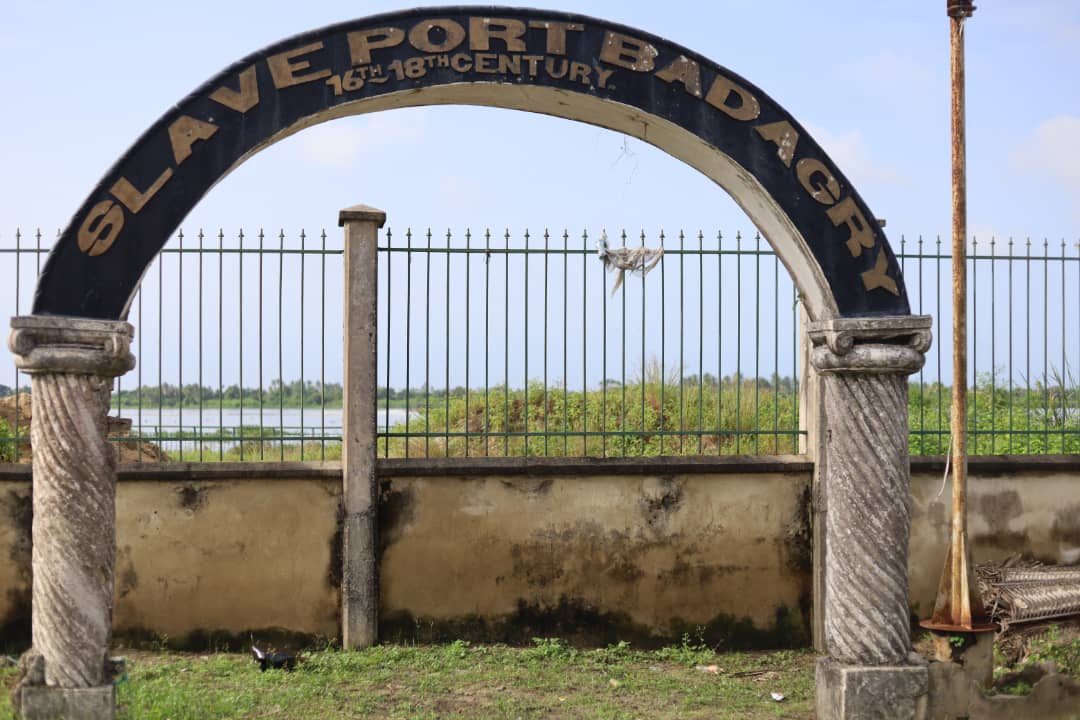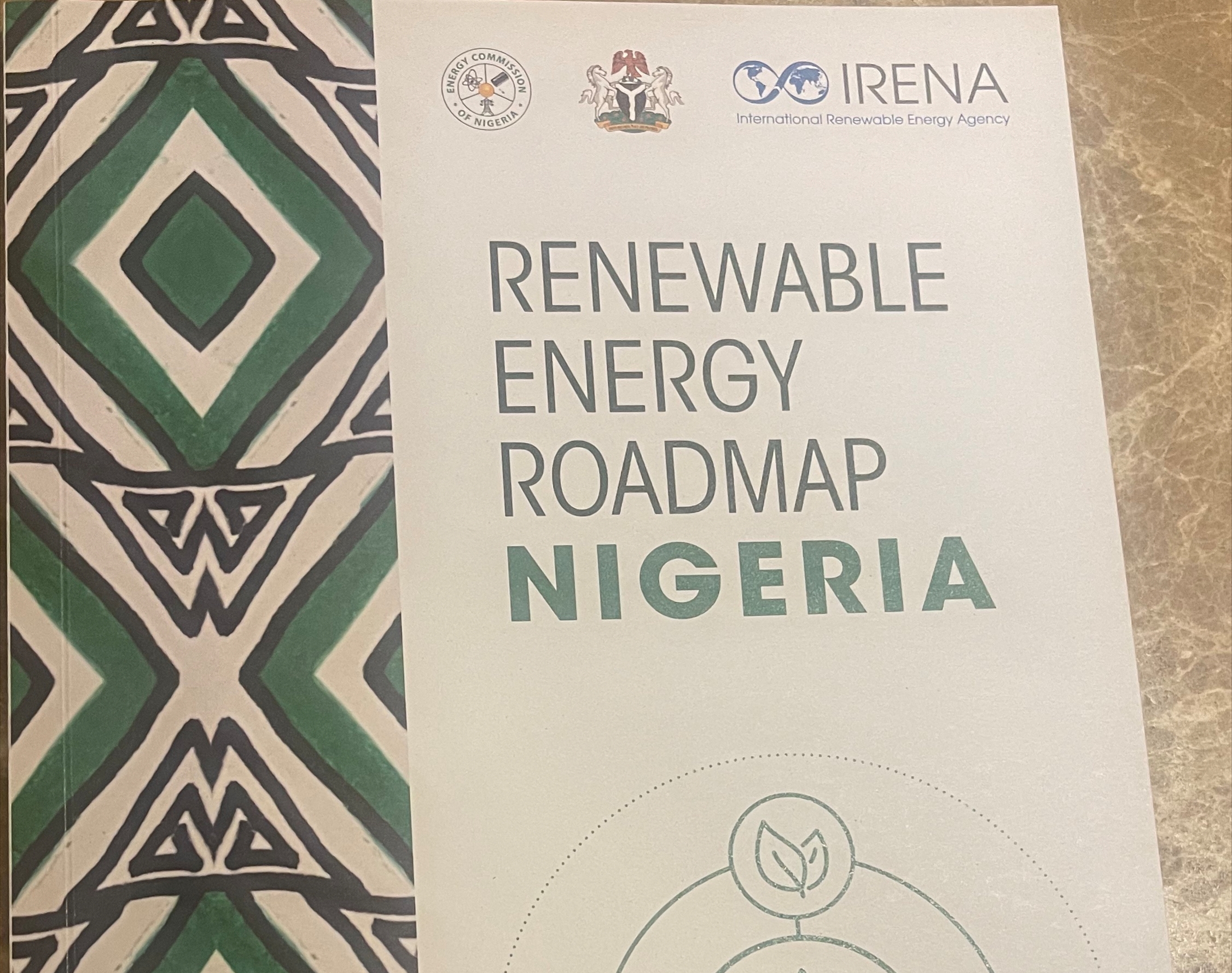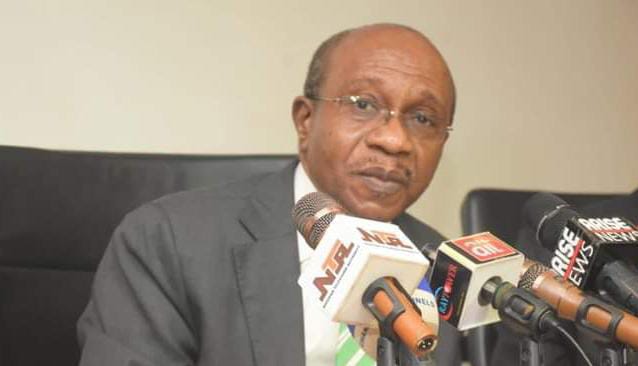BY OMOLOLA AFOLABI
“Hello, Miss Journalist, please come and see what sand miners have done to my community. We are losing our farmlands, and we are about to lose our homes and the tourist attraction here”. These words from Koffi Yovoyan, the traditional chief of Yovoyan, although spoken far away on the phone came from an urgent quest to ameliorate the looming disaster the community dwellers now face.
Yovoyan and Gberefu Island are two notable communities in the Badagry area of Lagos state. They are historic as the final stop for Nigerians who were enslaved during the slave trade era. But the existence of these historical communities is now threatened more than ever by the activities of sand miners.
Advertisement
Popularly regarded as the “Point of No Return”, Gberefu is Yovoyan’s neighbouring community. In 2009, Micheal Jackson, the late pop artiste, and his brothers were to build Slave History Theme Park and the Jackson Five Museum, a multimillion-dollar worth memorial, in the community. Like Yovoyan, Gberefu also stands the risk of getting submerged in the Atlantic ocean if the sand miners are not checked.
THE JOURNEY TO GBEREFU, YOVOYAN
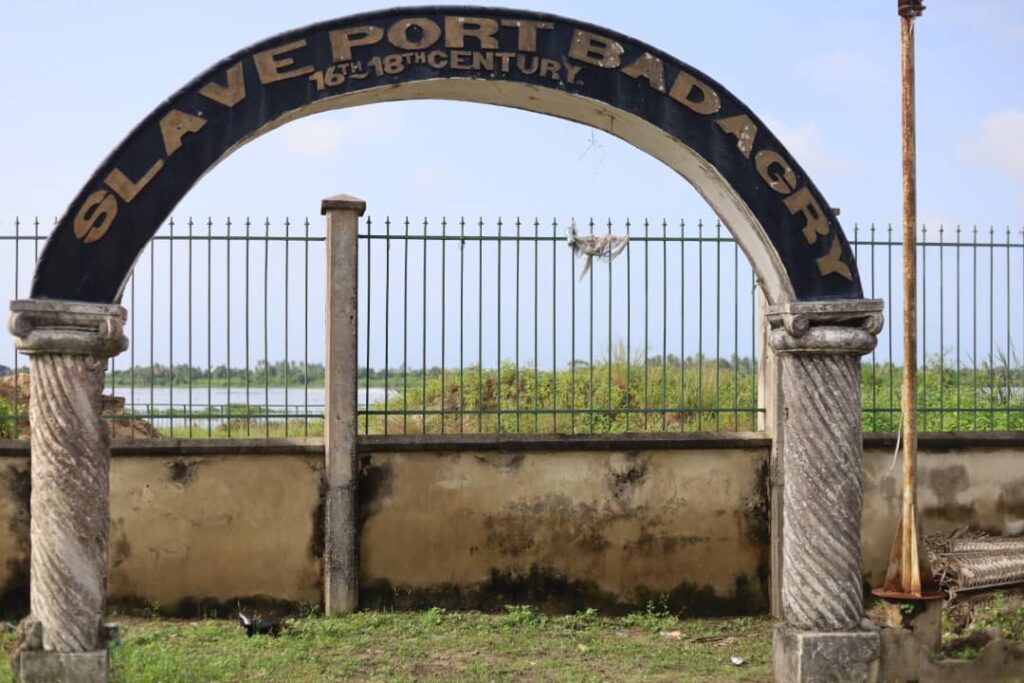
Advertisement
Inspired by the chief’s appeal, this reporter set out to visit both Gberefu and Yovoyan, and her findings confirmed the claims and fears.
The journey to the community was rather bumpy and rough as the once motorable roads have become almost impassable. The motorcycle rider manoeuvred through these roads and at every point, he came to the cliff as the activities of the sand miners chopped off both sides of the roads, leaving a trail of precariously sunken paths.
There were pools of water flowing from the sea towards farmlands that were about to be washed away; there were hills that have now been carved into uneven crevices, the rains worsening the already dire situation.
The trucks used by the miners have also caused damage to the roads, tampering with the pristine state of the historic community.
Advertisement
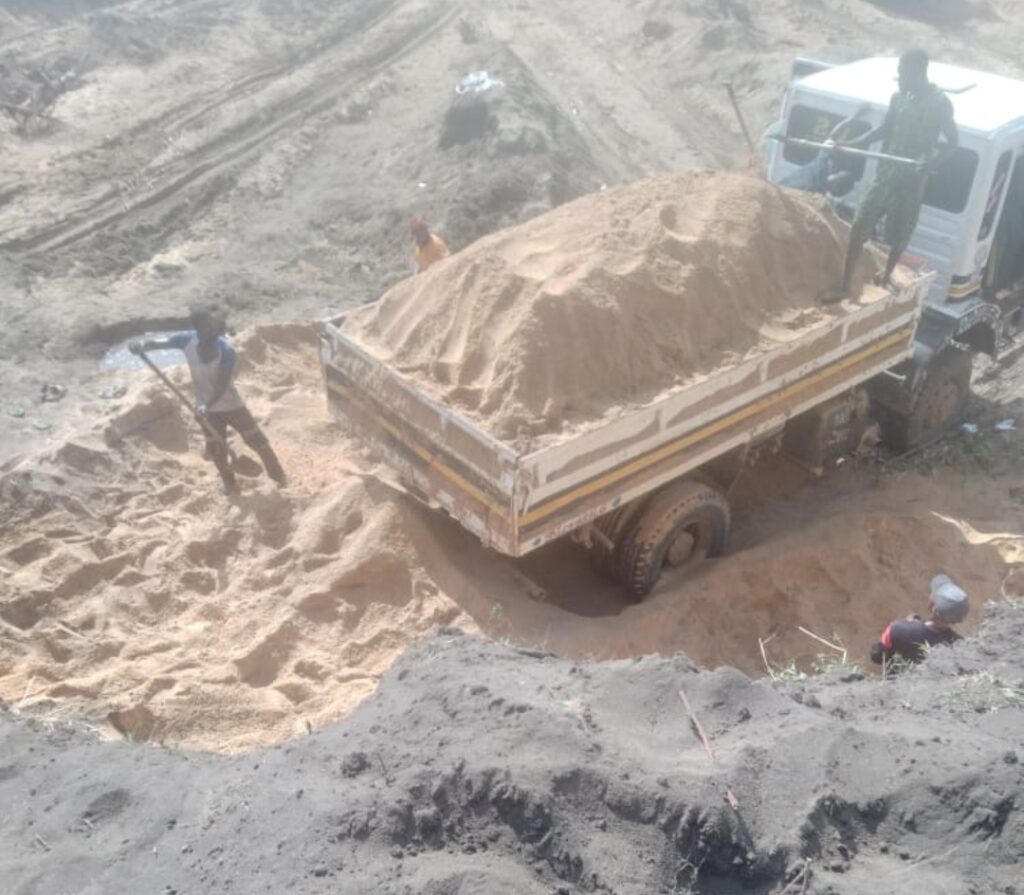
Koku Yao, a 66-year-old farmer and retired public servant, said the miners have laid what he described as an “environmental siege” on the community he has known all his life. His wife, a vegetable farmer, shared the same feeling.
“If you visit my coconut farm now, I’m somewhere in the middle of the cliff as both sides of my farm have been excavated,” Yao, who retired from Nigeria’s Department of Fisheries and Marine Resources, said.
He said Badagry is a veritable coconut market for the entire country.
Findings also confirmed that Lagos state is the highest producer of coconut as it generates over 70 per cent of the nation’s coconut.
Advertisement
According to him, he was coerced by the sand miners into selling his farmland, in exchange for some “juicy monetary rewards”, which he said he refused outright as he saw it only as gratification for a treasure he may never recover.
“As big as our farms are, all the places that used to be our farms have now become ditches. We can’t farm anymore. I also have a coconut and cassava farm. I have been pushed to mine the sand but I didn’t yield to such,” Yao said.
Advertisement
“All the places we used to farm have now become barren. We can’t even apply fertilisers to our farms anymore. There is nothing we grow that would ever germinate. All our coconut farms are gone; our cash crops are gone, and our fishes are all gone.”
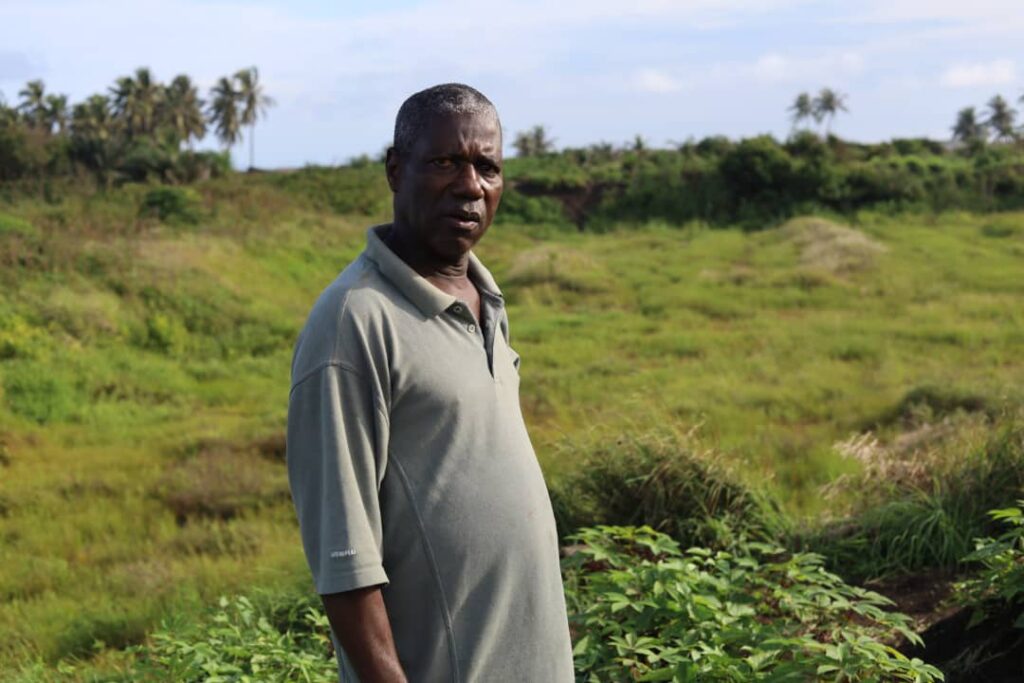
He said many letters of complaint addressed and submitted to the Lagos state government were yet to be replied, adding that a number of electricity poles (which are now without cables) are beginning to collapse due to sand mining.
Advertisement
‘COMMUNITIES NO LONGER ATTRACTIVE TO TOURISTS’
Yao explained that the mining has also affected the Point of No Return owing to flooding “caused by the activities of the sand miners.”
Advertisement

He said: “Also, tourists who come to the community may get frustrated at having to ply through the bad roads and they may decide never to visit again and even make bad reviews.
“This would affect the income streams, for the tourism sector and revenue for the government, and the visitors may begin to think the government has marginalised this historical community, which they are right about.”
He said the government has not taken any decisive action on the sand mining issue.
“They are well aware of such an important historical monument. It’s all over the news and they haven’t done anything about it even despite the media coverage of it,” Yao lamented.
The United Nations estimates that humans extract 50 billion tonnes of sand and gravel every year, enough to build a wall 27 metres high by 27 metres wide around the planet.
According to Statista, the direct tourism contribution of Lagos to the gross domestic product of Nigeria in 2016 was $2 billion and a forecast for 2026 of approximately $3.4 billion.
Unchecked sand mining, experts said, increases the formation of sinkholes, soil contamination, deforestation, coastal erosion, property damage, loss of aquatic life, disruption of coastal shorelines and that it has been widely reported to have several environmental implications.
They said all forms of mining cause erosion and sedimentation, which they claim have negative consequences on the physical environment, noting the correlation between sand mining activities and soil erosion, vegetation loss, aquatic biodiversity richness reduction and landslides.
Some studies have also found that sand mining activities easily lead to the destruction of the landscape, reduction in farm and grazing land areas, collapse of river dams, deforestation, and water pollution with severe implications for plant and animal biodiversity.
According to the United Nations Environment Programme, sand is the second most abundant and consumed extractive resource after water. Between 32 and 50 billion tons of sand and gravel are extracted annually globally.
A coastal sand mining study by Sridhar in 2019 has revealed that sand mining causes water pollution and poor water quality for the communities with concentrations of Lead (Pb) and Cadmium (Cd) as well as more particulates being found in the air.
As far as Bose Senepon, a 22-year-old farmer, is concerned, the only attraction her community has is the Point of No Return as there are no amenities there that would attract tourists.
“Many tourists and people who want to trace their roots like to visit to see these monuments and when they continue to mine the sand, it is very probable that the sea will take over the monuments,” she said.
She revealed that the island stands in the middle of both freshwater and seawater.
Findings reveal that the island is located in the middle of brackish water and expansive Atlantic. There was a boat to convey the reporter to the island and after the island, one encounters the massive body of the Atlantic ocean.
“They mine from both sides of the water bodies and if this mining persists, we could be carried away by either or both of the two water bodies,” Senapon added.
IMPACT ON AGRICULTURE
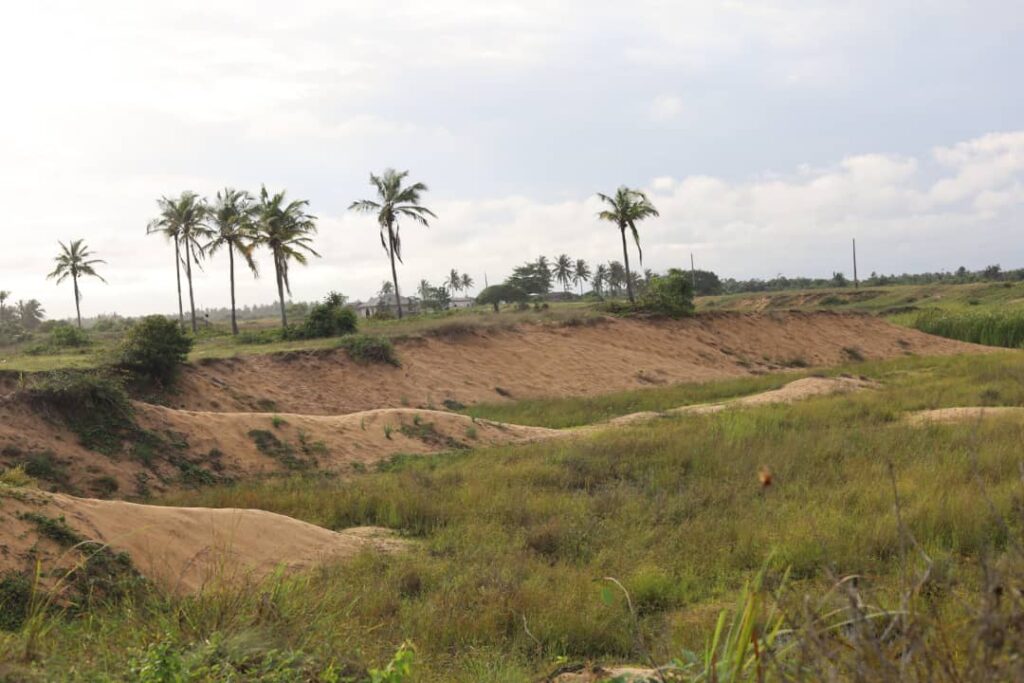
The young female farmer said the frequent sand mining activities have greatly affected her farming as many of the cars that should access the roads can’t come in anymore.
“When the roads were good, we paid roughly N6,000 for transportation, but because of the bad roads, we have to pay up to N24,000 on every trip, as transportation takes a chunk of our total proceeds and inflows,” she said.
It is an unwritten rule among the miners in Gberefun and Yovoyan communities not to speak to strangers and particularly journalists, especially on the modus operandi of their business.
However, after much persuasion, an evasive Aloma Umar, a young miner who is well in his thirties, said he is licenced to mine within the area.
Umar said he procured his licence at the mines office of the Federal Ministry of Mines and Steel Development, and that the business has been fairly good apart from poor infrastructure.
“You go to the Federal Mines Office in Abuja, after you may have found the place you want to mine and they would approve it to begin your business,” Umar said.
When the reporter requested further information on the process(es) involved, Lagos state involvement, and a link to other miners, Umar declined further comments.
GOVERNMENT AWARE OF MINERS’ OPERATIONS
A Lagos State Environmental Protection Agency official in Badagry, who gave his name simply as Tunde, confirmed to this reporter that a lot of sand mining operations are going on in Yovoyan and Badagry.
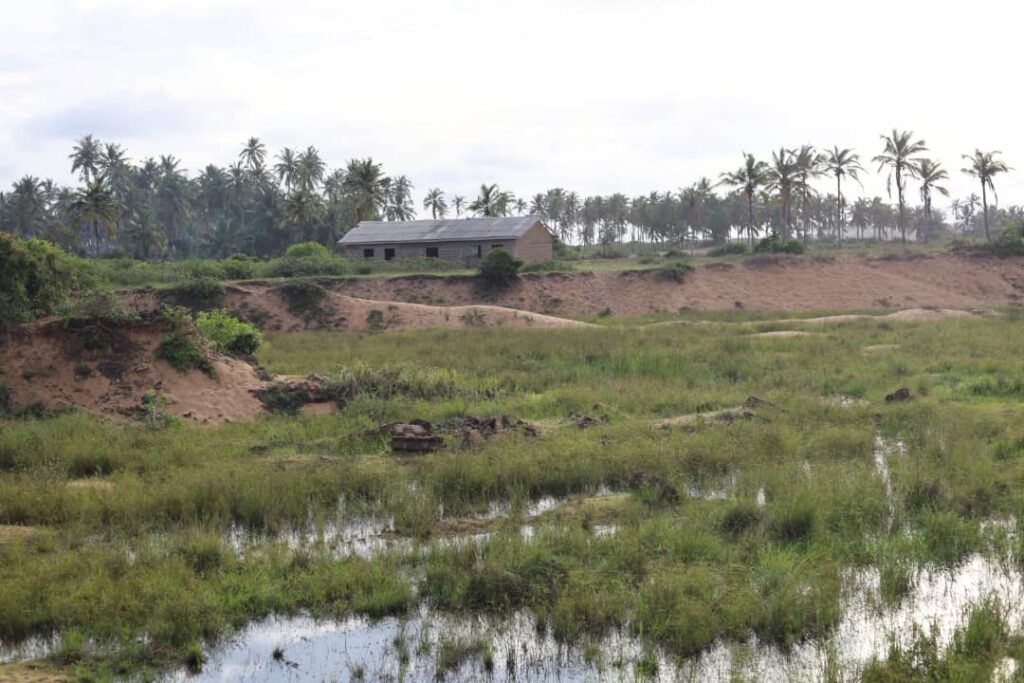
When the reporter asked what the agency is doing to curb these activities, she was directed to the ministry of environment but messages sent to the commissioner, Tunji Bello, are yet to be replied.
On his part, Bello’s counterpart in the Energy and Mineral Resources Ministry, Olalere Odusote, promised to respond to the questions sent to him by the reporter in two weeks.
However, many weeks after the promise, Odusote has refused to respond to inquiries sent to him.
The Point of No Return in Badagry now hangs precariously at the mercy of sand miners. pic.twitter.com/8K34i78Ijs
— Omolola Ruqayyah Afolabi (@Omololafolabi) January 16, 2023
Finima Nature Park in Bonny Island, Rivers state, is being managed by the Nigerian Conservation Foundation and financed by the Nigerian Liquefied Natural Gas Limited
According to the company’s website, the purpose of its establishment is to conserve nature and biodiversity in the region.
Akorede Shittu, a conservation officer at the park, told this reporter that unregulated sand mining can result in the loss of biodiversity, and the disappearance of monumental sites and sacred places globally. He said some of the lost sites will take thousands of years to recoup or be lost forever.
He added that illegal and unregulated sand mining in coastal communities can lead to sea encroachment into the affected communities, which can eventually lead to the loss of lives and properties.
He noted that these activities encourage the loss of biodiversity, especially those found in wetlands close to the sea, which he noted can also mean a loss of livelihood for people in those coastal communities.
Shittu explained that over the years, climate change has led to an increase in the amount of heat in the atmosphere, saying it has led to an increase in the frequency of wildfires being experienced in Europe, North America and especially in California, and so many other places as recorded in recent times.
He also linked sand mining activities to floods being experienced globally as witnessed recently in Pakistan and even Nigeria.
“To tackle the menace, local communities need to be carried along in policy making and implementation. Setting up community-based organisations and support groups to ensure the implementation and enforcement of such policies will go a long way to ensure their success,” Shittu said.
“Unregulated and illegal mining in coastal communities must be stopped. It is not only affecting the environment but putting the lives and properties of inhabitants of such communities at risk.”
He also recommended that reforestation should be carried out along the coastlines to reduce the effects of sea encroachment.
The conservation expert also suggested awareness in affected communities, noting that proper empowerment of the people for alternative means of livelihood would help a great measure.
This report was completed as part of the Centre for Journalism Innovation and Development‘s 2022 Climate Change Media Fellowship in West Africa with funding support from the Centre for Investigative Journalism’s Open Climate Reporting Initiative (OCRI).
